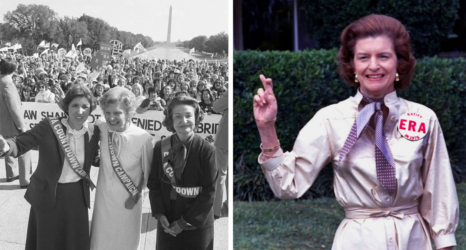Sally Rosloff and Susan Van Trees were two of thousands of “ERA Missionaries” who gave up jobs and college, left family and friends, and headed off to one of the unratified target states to win the final three states required for ratification of the ERA.
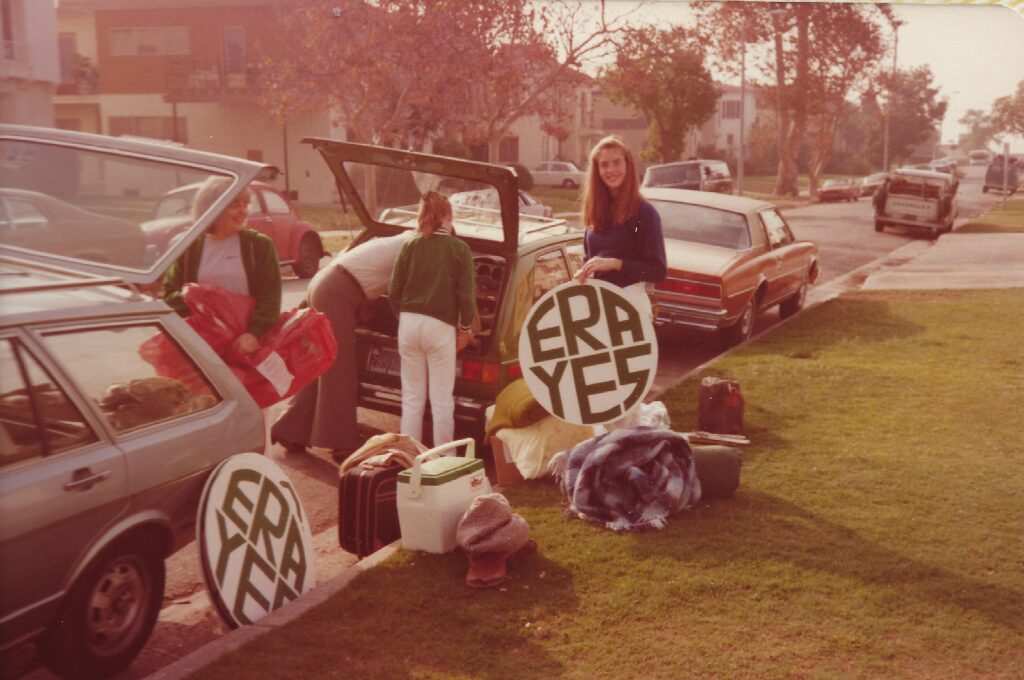
First introduced in Congress in 1923, the Equal Rights Amendment at its core consists of just 24 words: “Equality of rights under the law shall not be denied or abridged by the United States or by any State on account of sex.” Almost a century later, constitutional equality is yet to be enshrined into the U.S. Constitution—yet it’s as important today as it ever was.
With the ERA finish line in sight, Ms. wants to hear from you: the generations of feminists who marched, rallied and campaigned for the ERA. Share your ERA story—or that of your family!—with Ms. and we’ll publish it along with many others. Include a photo if you have one.
You can share your story in one of three ways:
- Email your story to myERAstory@msmagazine.com.
- Submit your story by heading to ERAyes2021.org.
- Share your story on Twitter, Facebook or Instagram by tagging #myERAstory.
In November of 1981, Sally Rosloff and Susan Van Trees packed up Sally’s VW Rabbit and drove across country from Los Angeles to Florida, where they joined the National Organization for Women’s Countdown Campaign to ratify the Equal Rights Amendment. Van Trees left her two young daughters, Vickie and Joanna, behind with their father, James. Rosloff quit her job as a medical technician.
Van Trees and Rosloff were two of thousands of women (and a few men) called “ERA Missionaries” who gave up jobs and college, left family and friends, and headed off to one of the unratified target states—Florida, Illinois, Oklahoma, North Carolina, Virginia and Missouri—to win the final three states required for ratification of the ERA.
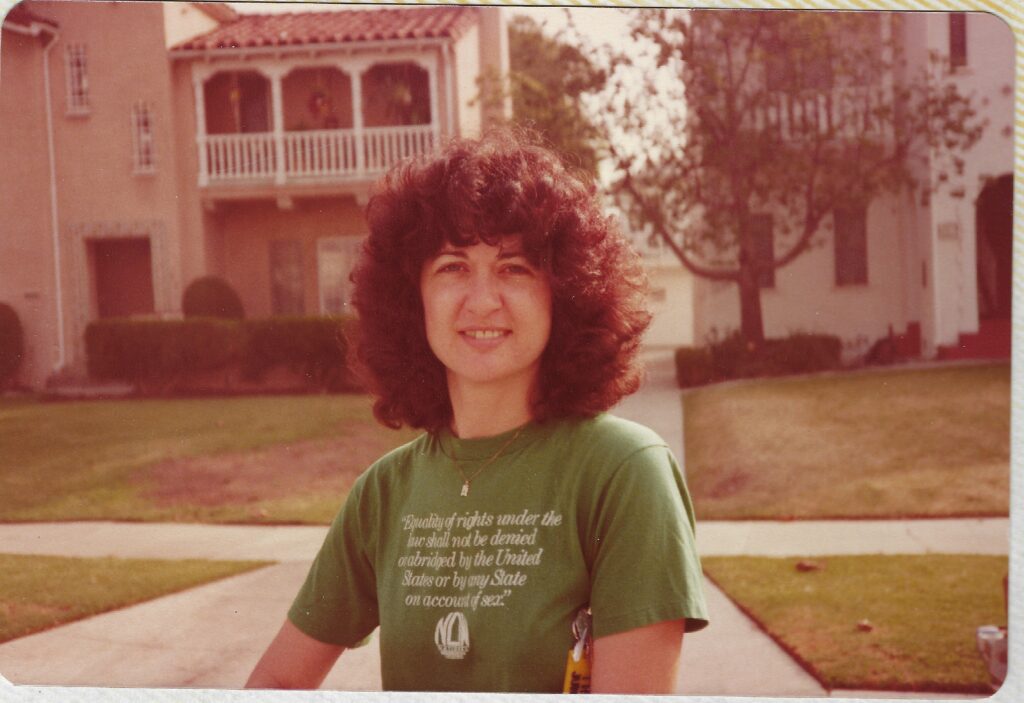
Van Trees and Rosloff worked as field organizers for NOW. Rosloff’s future husband, Cooper Zale, kept LA NOW’s fundraising operation going to help finance Van Trees and Rosloff’s work. Rosloff stayed in Florida from November 1981 until June of 1982, although Van Trees had to return to her family a few months earlier.
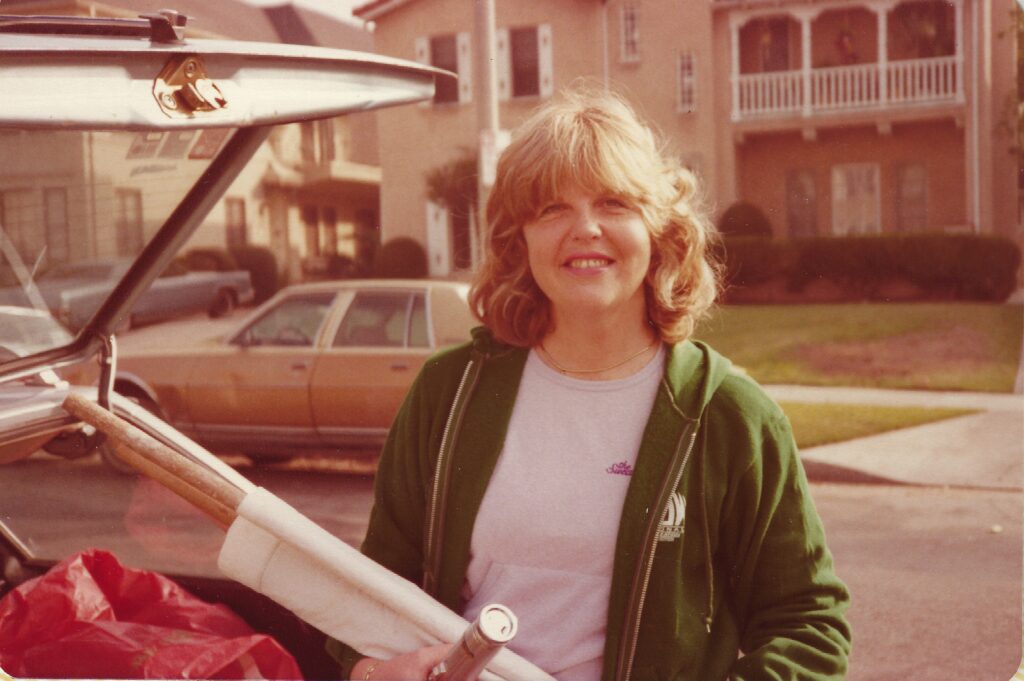
Van Trees died in 2011 after a long illness, but her daughter and granddaughter have continued campaigning for the ERA. Ms. spoke with Sally Rosloff, as well as Susan Van Trees’s daughter Joanna Van Trees Cowitt and granddaughter Julia Cowitt, about their intergenerational support for the ERA.
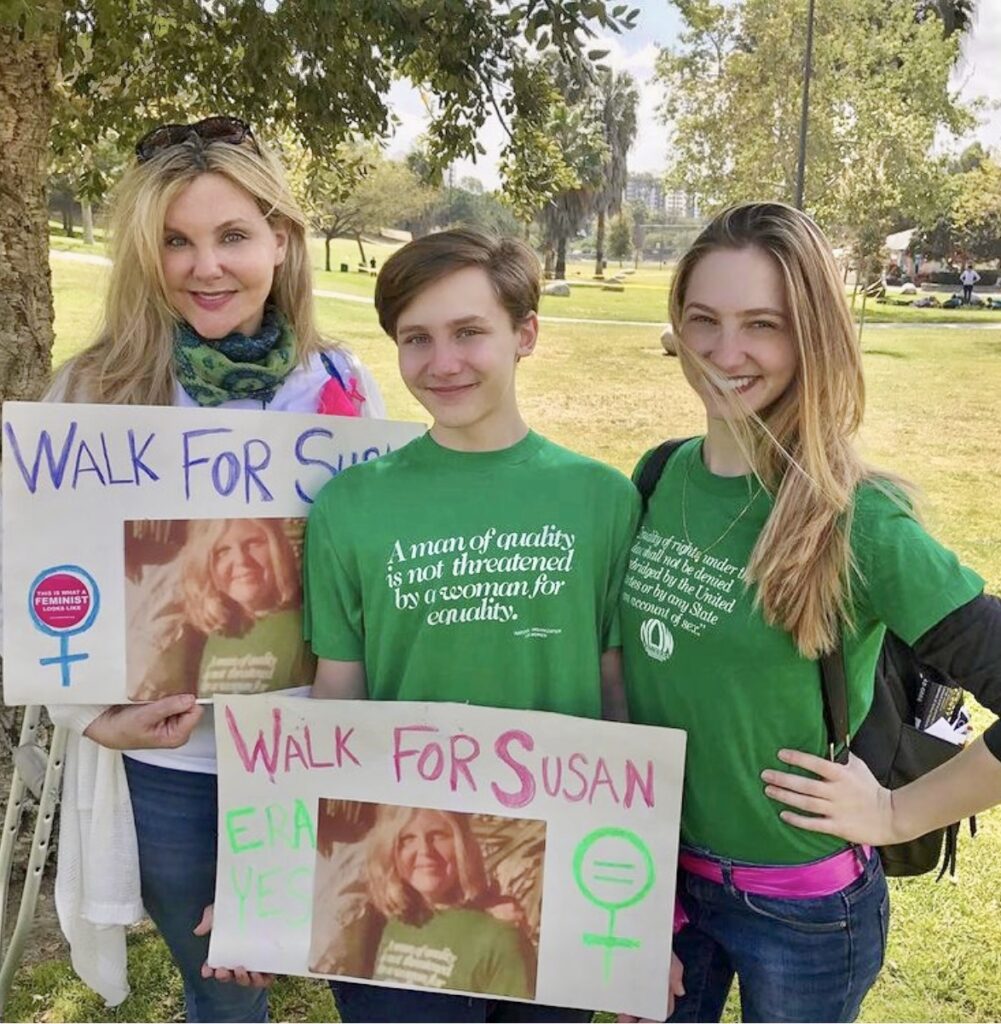
Carrie Baker: How did you first get involved in the movement for the ERA?
Sally Rosloff: Well, I was a member of NOW, the Los Angeles chapter. I had been a member for a while. My mom had been a member. I come from a family that was that way.
I got active when I think a lot of people did—when Reagan was running for president. He was elected in ‘80. After that, there was a huge influx of people and everyone started saying, “What can we do? What kinds of things can we do?” The ERA had the deadline coming up in ‘82, so I was there when folks started having marches and organizing for the final push to ratify the ERA.
Carrie Baker: What about Reagan activated you? What was your concern at the time?
Sally Rosloff: There was a feeling of going backwards in the country, that he was representing a very conservative push in terms of how women were seen, how minorities were seen. There was a real concern for that backwards step.
Joanna Cowitt: I remember when Reagan got elected. He came to my middle school—Paul Revere Junior High. I wanted to boo him.
Carrie Baker: Joanna, how did your mom get involved with the ERA? Did she join NOW because of the ERA?
Joanna Cowitt: I think they were pretty simultaneous. I went to junior high in 1980, but I remember in elementary school she was involved. I remember in elementary school people making fun of my mom, that she was a women’s libber, and it was a little embarrassing. She always said about the suffragists that they had to stand on these soap boxes. They had to starve themselves just to get someone to pay attention.
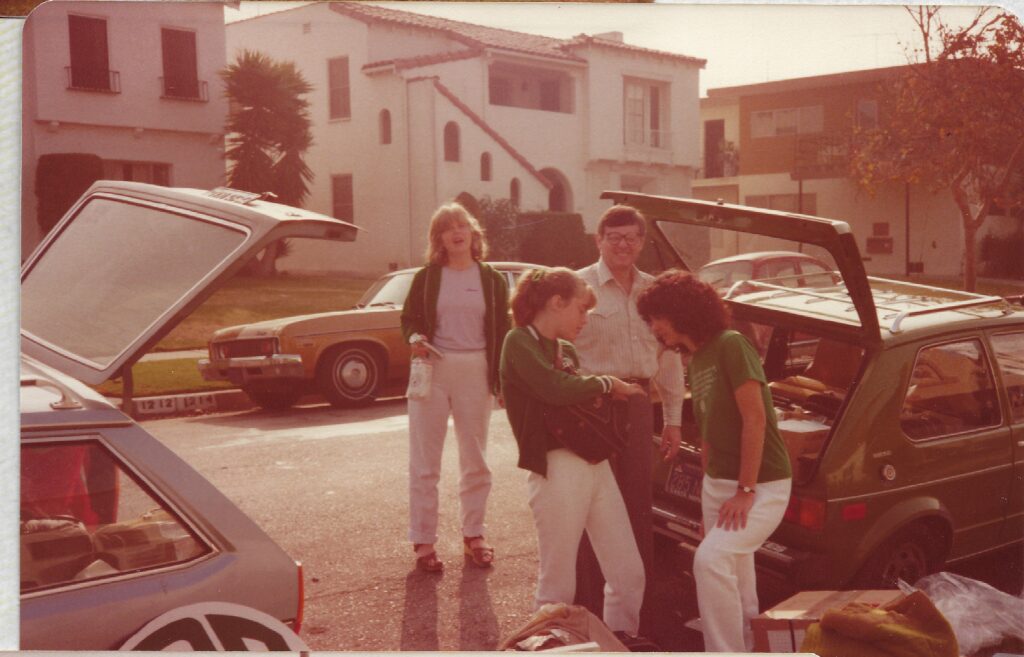
Carrie Baker: Sally, how did you and Susan decide to pick up and head to Florida?
Sally Rosloff: It was just fantastic to have that opportunity. When we went to the NOW conference in the fall of 1981, they were interviewing for field organizers. I was like, “Hey, this is fantastic. I could go do this and help. I could actually do something.” By that time, Susan and I really knew each other, and it was a great match because Susan was extremely extroverted and I am an introvert. So, we were a great team.
It was a time in my life when I was still finding myself. I had done different things and I had a job, but it was a job I could leave. We did get a stipend, but we were put up in houses. I thought, well, I’ll come back and find something else to do, when I come back.
So we drove a green VW Rabbit across the country. Susan and I talked nonstop the entire way across the country. About our lives, and activism, and kids, and all kinds of stuff, politics, everything. We just talked nonstop for four or five days.
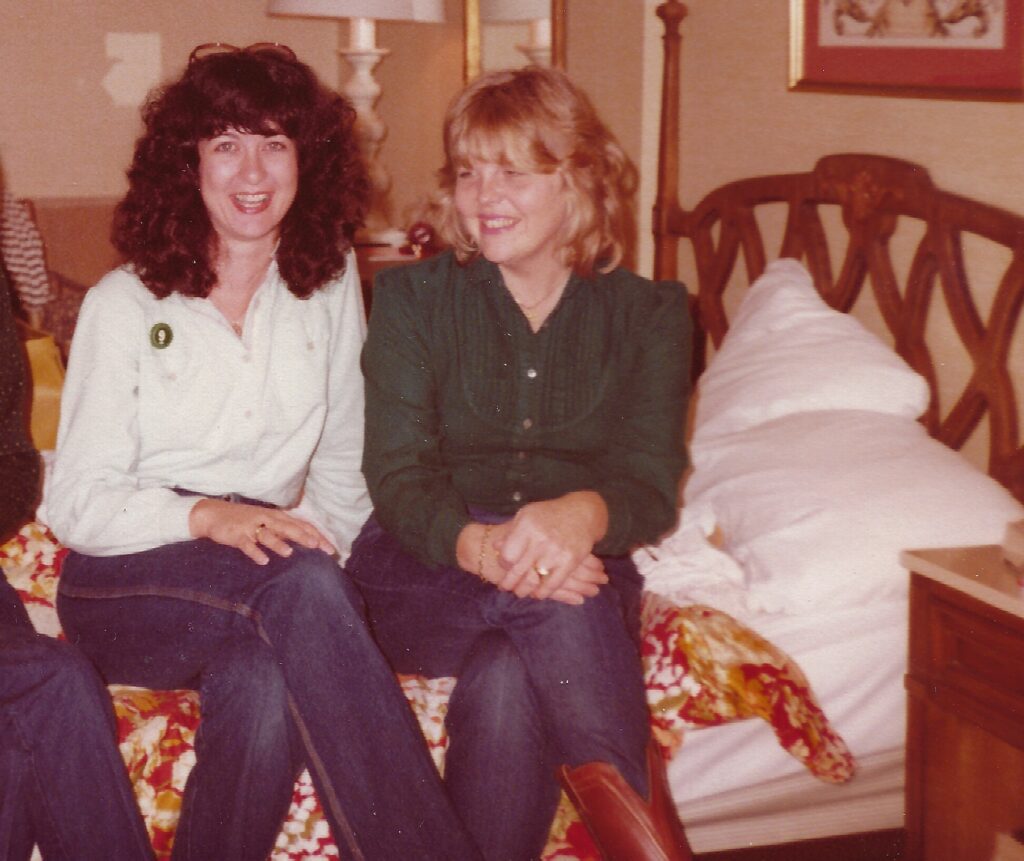
Baker: What happened once you got to Florida?
Sally Rosloff: Well, we went to Tallahassee where they had a training session. Then we were based in Broward County, where Fort Lauderdale is, but we went all the way down to Miami. They had people already in place that had volunteered to house people. When I look back now, the organization was just incredible from the national level to the state level. They had been doing a lot of work for a long time.
Those of us who were going to the key states were brought in at the end for the final push. We got there in November and in Florida their [legislative] session ended in March. They were hoping there would be a vote by March, but it turned out they had a special session extended. So, the final vote was the beginning of June. Susan wasn’t able to stay the whole time.
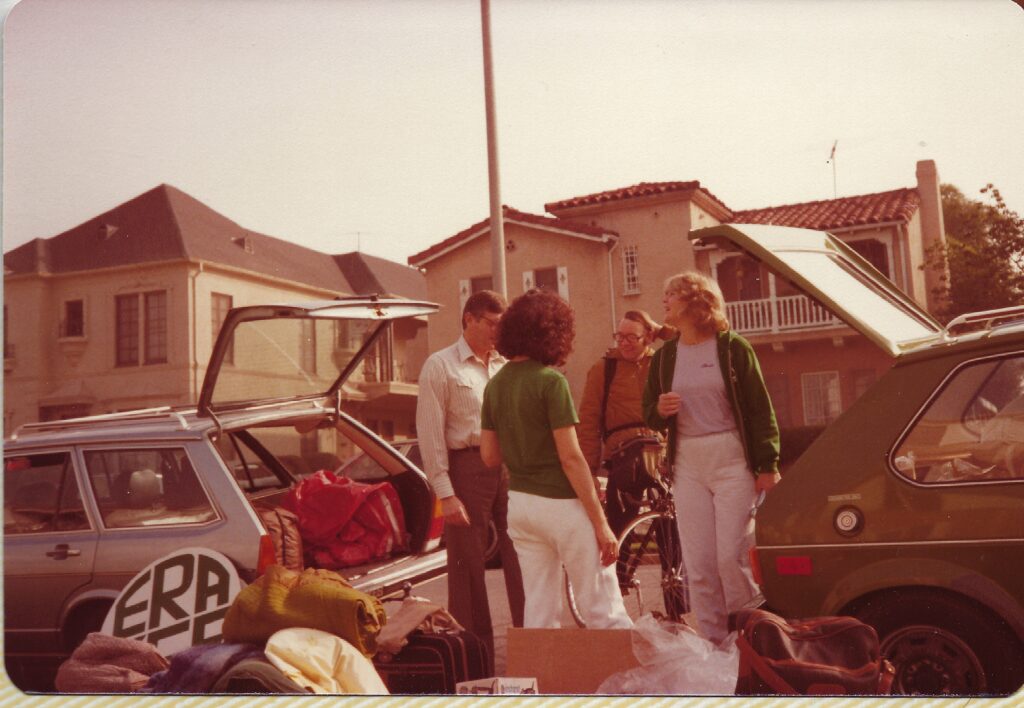
Baker: So, Joanna, what did you think about your mother going to Florida to fight for the ERA? How did she talk to you about why she was doing this?
Joanna Cowitt: Well, we already obviously knew that it was something that was really important, and we’d already done our own bit as activists, and my parents were kind of having problems at the time anyway. My sister had probably just turned 16, and I was around 14. My mom and I were really, really close and my sister also. It was hard. It was definitely a sacrifice. We knew it was the right thing, and it was a sacrifice. She was gone almost four months, but we talked on the phone every day.
I knew that my mom was making history, and it was devastating when Florida did not pass. Devastating. It was like, “wait, what, you were gone all that time and it didn’t happen?” And here we are how many years later? Still fucking fighting for it. It’s ridiculous.
“I knew that my mom was making history, and it was devastating when Florida did not pass. Devastating.“
Baker: Sally, what did you do as far as your advocacy with Susan down there?
Sally Rosloff: We did a little of everything. There were groups that we went and talked to. The support was there, it wasn’t like we had to convince people, but we had to activate the people who would be favorable if they knew about it, and we had to get them to contact their [state] legislators, and put the pressure on them.
We networked through the groups that were out there. We got articles in the newspapers, and organized some rallies, and in the final push they were trying to get busloads of people to go up to Tallahassee for rallies and speeches.
Baker: When you brought this issue to people, how did they respond?
Sally Rosloff: Once we talked about what it was and what it would do, they were pretty supportive. We were going to where the support already was, and they needed to be educated about what it really was and what it would do, and what they needed to do to get it passed, to ratify it.
We had to follow up. We had to keep following up, and be on the phones, and talk to people to make sure that translated into the action that needed to happen, whether it was writing postcards, making the calls to their legislators, seeing if they would get up to Tallahassee and following up on that, and generating the publicity, the articles.
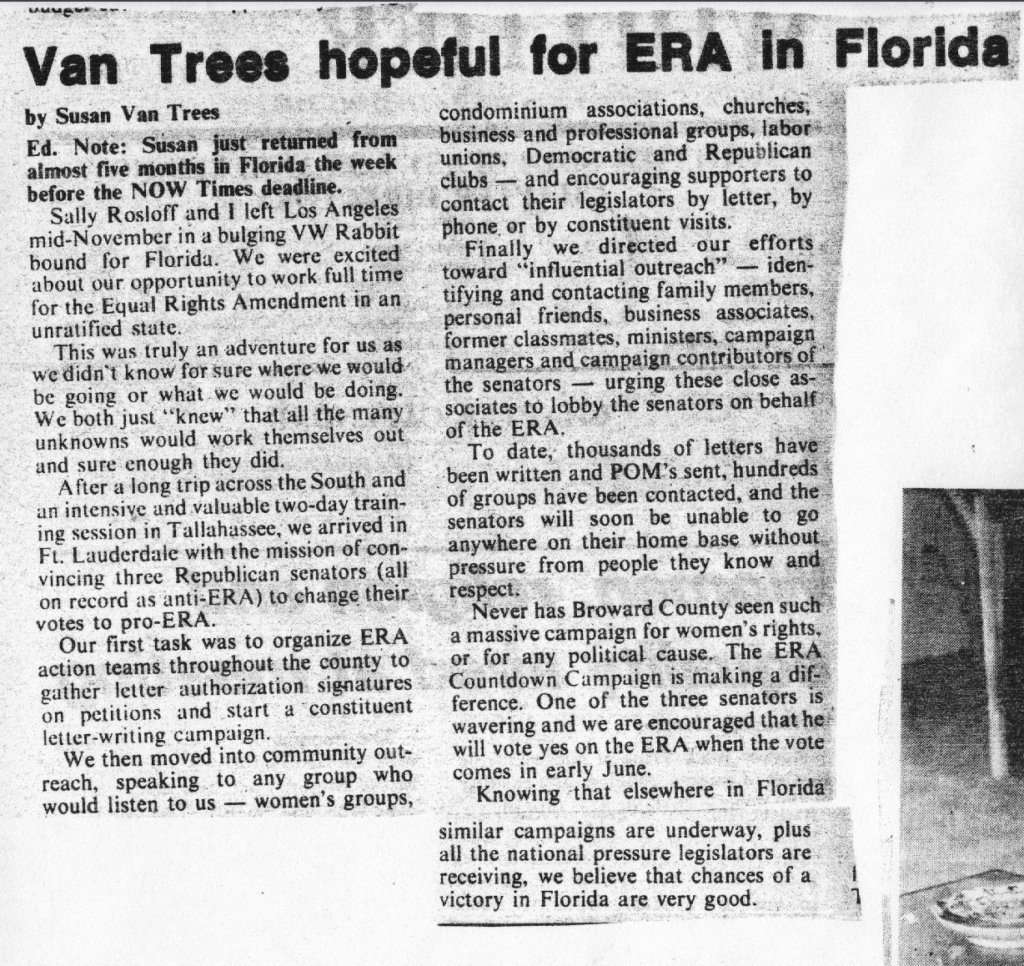
Baker: What was the atmosphere like in June for the final vote?
Sally Rosloff: It was really hopeful. I mean, I wasn’t the one doing the headcounts [of the legislators], making sure they knew what the vote would be. I think maybe a few people knew there was a good chance it wouldn’t pass in the Senate.
And afterwards, we were so devastated. We were up against those entrenched industries that thought it was against their monied interests, and so, they poured the money into it to keep it from passing. People were pretty devastated because the feeling was high. Everybody came up there, thousands of people. Everybody was there to rally, and as the voting was going to happen, and as it happened. Then when the house passed, we were all on a high, and then the Senate didn’t pass.
Baker: Julia, did you ever talk to your grandmother about her work for the ERA?
Julia Cowitt: Yes. I’m sure I must have, but I don’t remember. I was 13 when she died, and I didn’t really get into the feminism until I was in high school. I’m now 22. I think my grandmother and my mom inspired me. I can’t think of a very specific time that we would talk about women’s rights. It was just always. It was just all the time that we were talking about it. I was clinic defending with her in the womb.
Baker: How are you continuing the family tradition of feminist activism?
Julia Cowitt: In high school, I started a chapter of Girls Learn International. Amanda Gorman went to high school with me—we were good friends—and she was one of the founding members of our GLI chapter.
We did a lot of fun things in GLI. In junior year, GLI took a bunch of delegates to the U.N. Commission on the Status of Women meetings in New York City. It was the anniversary of the Beijing conference, where Hillary [Clinton] famously said, “Women’s rights are human rights.” So, that was really, really fun. We got to sit in on meetings, and it was so inspiring.
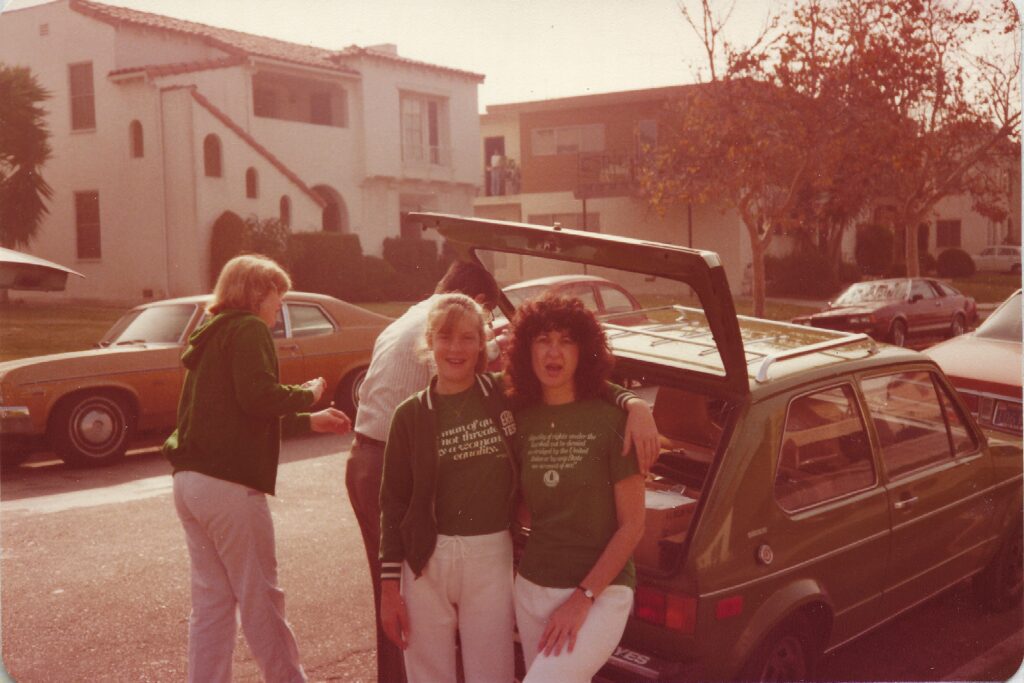
Baker: Sally, are your children feminists?
Sally Rosloff: Absolutely. I stayed active in clinic defense [to protect abortion clinics] when I was pregnant with Emma, standing in the rain holding a sign outside the clinic. She was our second. Eric was born in 86 and Emma in 89. We talked about it all the time at home, even though I wasn’t going to an office or doing phone banking anymore. Of course, they knew the story of how their mom and dad met.
Cooper was working on the ERA campaign for Los Angeles, where he ran the phone banks to help raise money to support the efforts in the states. We met through NOW. He was already active in NOW before I was. He grew up in Ann Arbor, Michigan, and his mother was a feminist. They had a women’s organization they started, and they were active politically. She was active in local politics, I mean, she was knocking on doors, talking to strangers, stopping them on the street, everything. So, he grew up with that.
We met at a march for the ERA [in Los Angeles], in August of ‘81, or maybe ‘80. It was the big one, where we had all the celebrities come, and it was a huge march. Every activist was involved, and so that’s where I made some life-long friends, and met Cooper.
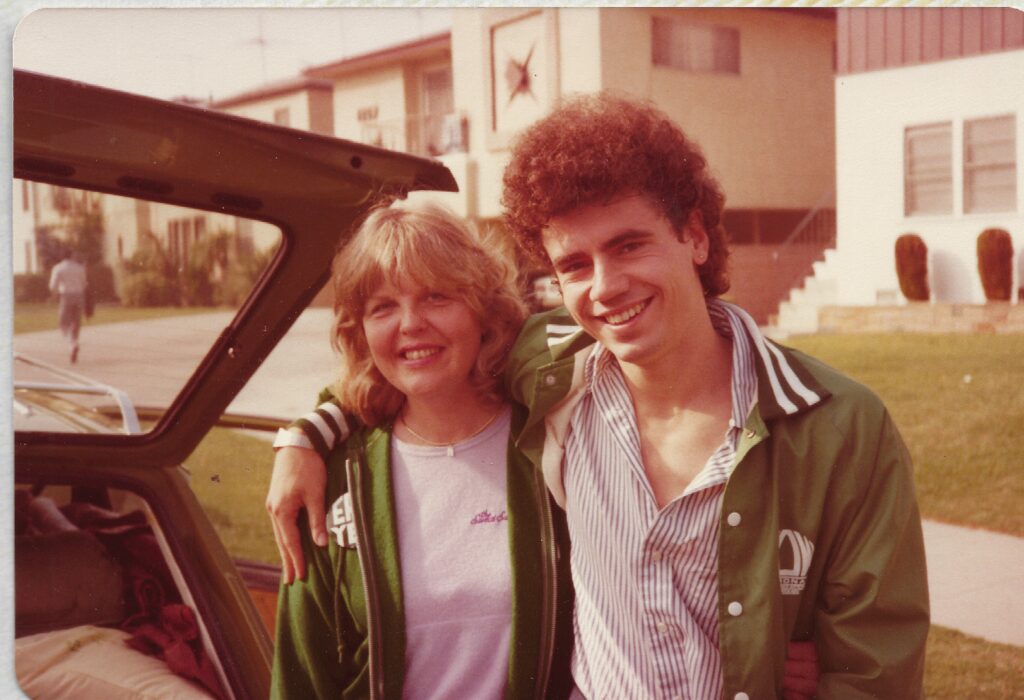
Baker: Sally, how do you think the experience of taking six months out of your life and traveling cross country with Susan changed you? What did you learn and how did it shape who you are now?
Sally Rosloff: Well, I just loved that this organization existed, the National Organization for Women, with a campaign that I could step into and do something, because I was someone who wanted to do something, but I wasn’t necessarily someone who knew how to set it up or always knew what to do. But to walk into something where they’re like, “okay, we’re going to pair you with this person.” Sally and I made a good team.
I didn’t have a family yet. It was a fantastic opportunity to do something that would make a difference in all of our lives, and I loved being able to have the opportunity to do that. It was a growth experience for me because of being an introvert, and after Susan left, having to stand up more and do more speaking and do that kind of stuff.
I came back and that was the year that I was president of the chapter. So all the skills that I’d learned in Florida, in terms of speaking to the media, all of that came in really handy. It really informed how we lived our lives.
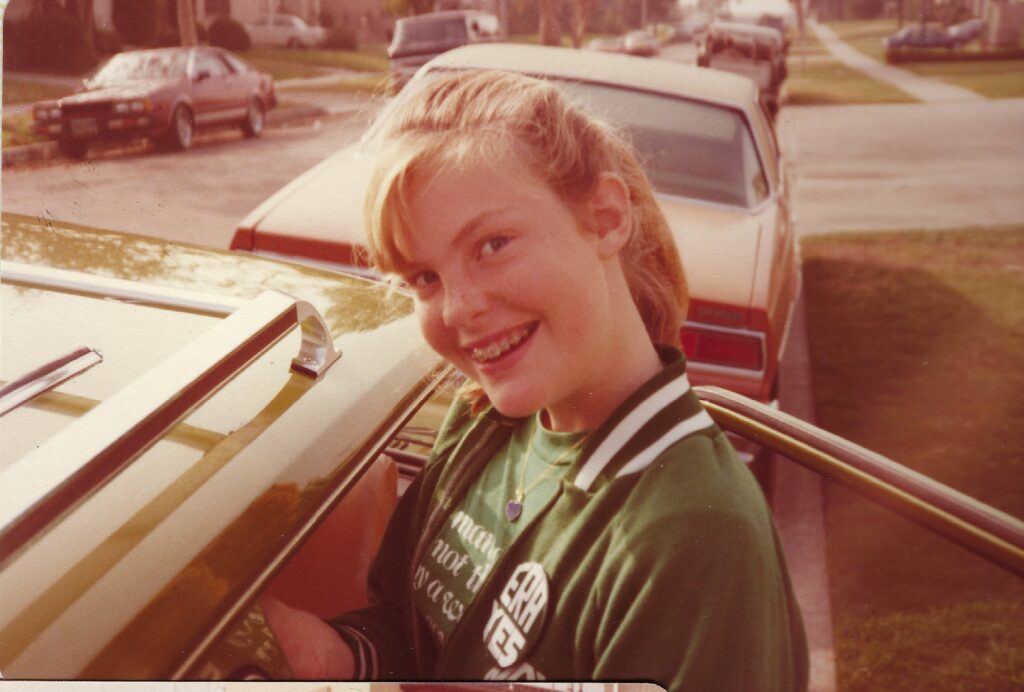
Baker: Joanna, what about your mom? How do you think it affected her, the experience of taking off for four months?
Joanna Cowitt: Well, obviously, there was the family sacrifice, that she had to miss out on us, but I think as a person, she felt very satisfied, that it was a life experience for her and for us by association. It’s something I’m still very, very proud of her for doing and as you can see, even with my kids it is something that is so instilled and ingrained in us.
Feminism gave us a sense of community at the time, it was our church. It’s where we rejoiced together. Where we sang. Where we chanted, and cried, and worked, and brought our children. We went to funerals.
It was friends. It was like family. So even if it’s not your full-time job, it’s part of who you are. It’s like religion.
And I’m so like my mom, I’m like her clone. I even drive a truck like she did. She became a real estate broker and she got so tired of the sexism from contractors that she got her contractor’s license, and even still it’s fricking frustrating. My sister and I, now we run my mom’s business.
Baker: How do you feel about the current fight for the ERA?
Julia Cowitt: It’s all sentimental to me. Nana worked so hard for this, and if it can happen in my lifetime, I’m going to feel really happy about it because I hate that she died before she got to see it ratified.
Joanna Cowitt: You know how we talk about microaggressions and racism? There’s also so many microaggressions in sexism. I really feel like the ERA should have been in the Constitution decades ago. When did they write it? Almost 100 years ago. It’s ridiculous. It’s time to pass the ERA. It’s time. It’s been bubbling and brewing. Your kids. My kids. We’re ready. It’s time.
Up next:





